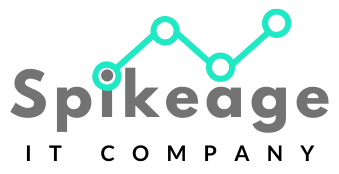Full features list of chatGPT and chatGPT plus
ChatGPT and ChatGPT Plus are natural language processing (NLP) models developed by OpenAI, designed to generate human-like responses to natural language queries. ChatGPT is the base model, while ChatGPT Plus is an upgraded version with more parameters, enabling it to generate more accurate and diverse responses. The following are the features of ChatGPT and ChatGPT Plus:
- Language Support: ChatGPT and ChatGPT Plus can communicate in multiple languages, including English, Spanish, French, German, Italian, and Portuguese.
- Conversational abilities: The models can generate human-like responses to natural language queries, making them useful for chatbots, virtual assistants, and other conversational AI applications.
- Contextual Awareness: ChatGPT and ChatGPT Plus can understand and maintain context throughout a conversation, enabling them to generate more relevant and accurate responses.
- Multi-turn dialogue: The models can handle multi-turn dialogue, enabling them to engage in longer conversations with users.
- Customizability: ChatGPT and ChatGPT Plus can be fine-tuned to specific domains, allowing them to generate more relevant and accurate responses for specific use cases.
- Large training datasets: The models are trained on massive datasets of text from the internet, allowing them to learn and generate responses based on a wide range of topics and styles.
- Multi-task learning: The models can perform multiple NLP tasks such as language modeling, text completion, and text classification.
- Transfer learning: ChatGPT and ChatGPT Plus can be fine-tuned on smaller datasets to generate more accurate and relevant responses for specific use cases.
- Pre-trained models: OpenAI provides pre-trained models that can be used out-of-the-box for various applications such as chatbots and virtual assistants.
- High-quality responses: ChatGPT and ChatGPT Plus generate high-quality responses, making them suitable for applications such as customer service, content generation, and language translation.
- Speed: The models can generate responses in real-time, making them suitable for applications that require fast response times.
- Integration with existing systems: ChatGPT and ChatGPT Plus can be integrated with other technologies such as voice assistants, chatbots, and augmented reality.
- Open-source: The models are available as open-source software, allowing developers to use and modify the code for their applications.
While ChatGPT Plus has more parameters than ChatGPT, the features of both models are similar. The main difference is that ChatGPT Plus generates more diverse and accurate responses due to its larger number of parameters.
What is the difference between chatGPT and chatGPT Plus?
The main difference between ChatGPT and ChatGPT Plus is the number of parameters each model has. ChatGPT has 1.5 billion parameters, while ChatGPT Plus has 6 billion parameters. The increased number of parameters in ChatGPT Plus enables it to generate more accurate and diverse responses than ChatGPT. Additionally, ChatGPT Plus is pre-trained on a larger dataset of text from the internet, making it more versatile and capable of generating responses across a wider range of topics and styles.
The increased number of parameters in ChatGPT Plus also allows it to handle more complex tasks, such as generating longer and more coherent text passages. For example, ChatGPT Plus can generate complete news articles, while ChatGPT may struggle to maintain coherence over longer passages.
Despite these differences, both ChatGPT and ChatGPT Plus share many of the same features, such as contextual awareness, multi-turn dialogue, and customizability. Both models are also trained on large datasets of text from the internet, allowing them to generate responses based on various topics and styles.
In summary, while ChatGPT and ChatGPT Plus share many of the same features, the increased number of parameters in ChatGPT Plus enables it to generate more accurate and diverse responses, making it more suitable for complex NLP tasks.
